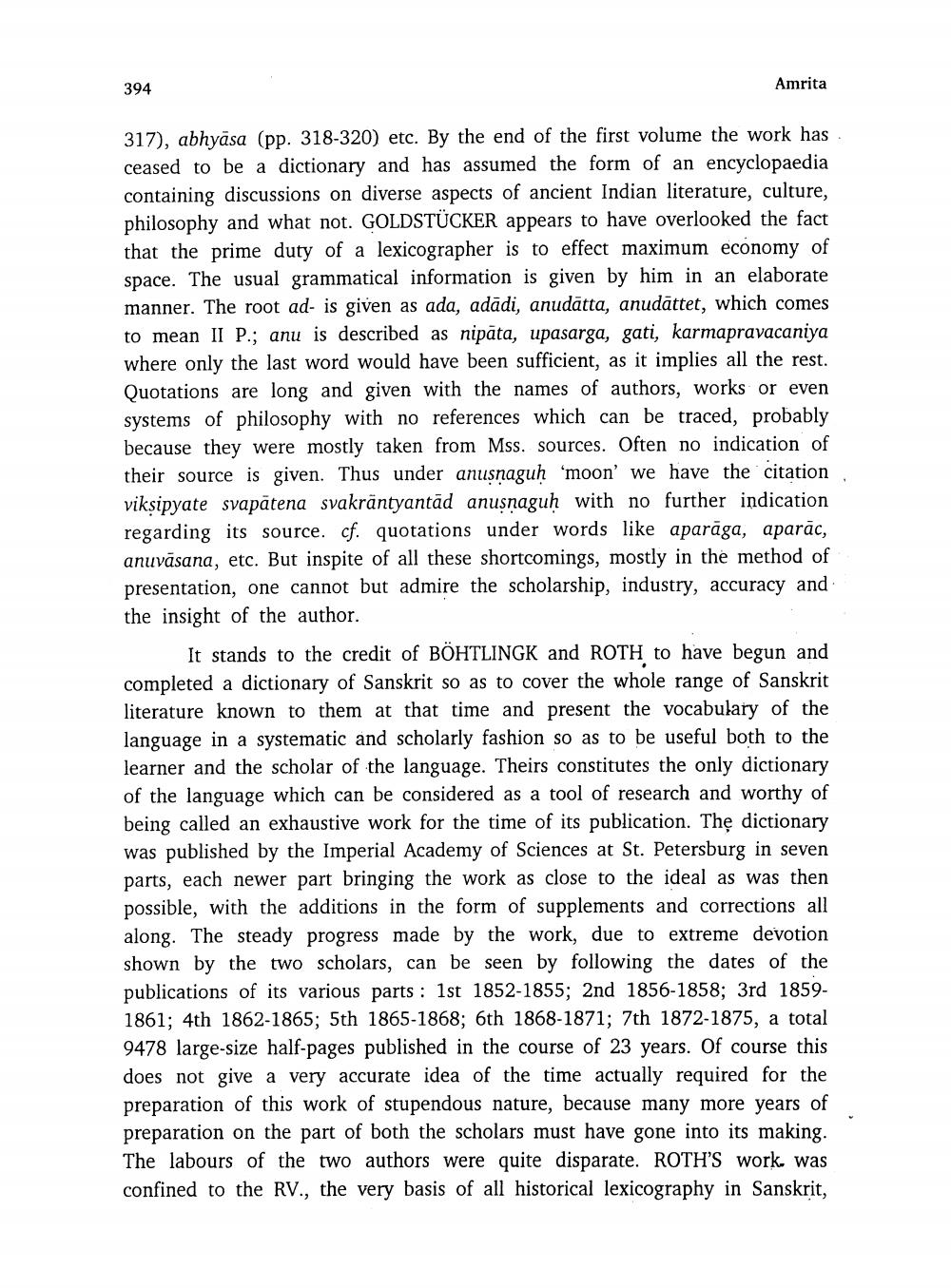________________
394
Amrita
317), abhyasa (pp. 318-320) etc. By the end of the first volume the work has ceased to be a dictionary and has assumed the form of an encyclopaedia containing discussions on diverse aspects of ancient Indian literature, culture, philosophy and what not. GOLDSTÜCKER appears to have overlooked the fact that the prime duty of a lexicographer is to effect maximum economy of space. The usual grammatical information is given by him in an elaborate manner. The root ad- is given as ada, adādi, anudātta, anudāttet, which comes to mean II P.; anu is described as nipāta, upasarga, gati, karmapravacaniya where only the last word would have been sufficient, as it implies all the rest. Quotations are long and given with the names of authors, works or even systems of philosophy with no references which can be traced, probably because they were mostly taken from Mss. sources. Often no indication of their source is given. Thus under anusnaguh 'moon' we have the citation viksipyate svapātena svakräntyantad anusnaguh with no further indication regarding its source. cf. quotations under words like aparāga, aparāc, anuvāsana, etc. But inspite of all these shortcomings, mostly in the method of presentation, one cannot but admire the scholarship, industry, accuracy and the insight of the author.
It stands to the credit of BÖHTLINGK and ROTH to have begun and completed a dictionary of Sanskrit so as to cover the whole range of Sanskrit literature known to them at that time and present the vocabulary of the language in a systematic and scholarly fashion so as to be useful both to the learner and the scholar of the language. Theirs constitutes the only dictionary of the language which can be considered as a tool of research and worthy of being called an exhaustive work for the time of its publication. The dictionary was published by the Imperial Academy of Sciences at St. Petersburg in seven parts, each newer part bringing the work as close to the ideal as was then possible, with the additions in the form of supplements and corrections all along. The steady progress made by the work, due to extreme devotion shown by the two scholars, can be seen by following the dates of the publications of its various parts : 1st 1852-1855; 2nd 1856-1858; 3rd 18591861; 4th 1862-1865; 5th 1865-1868; 6th 1868-1871; 7th 1872-1875, a total 9478 large-size half-pages published in the course of 23 years. Of course this does not give a very accurate idea of the time actually required for the preparation of this work of stupendous nature, because many more years of preparation on the part of both the scholars must have gone into its making. The labours of the two authors were quite disparate. ROTH'S work. was confined to the RV., the very basis of all historical lexicography in Sanskrit,




